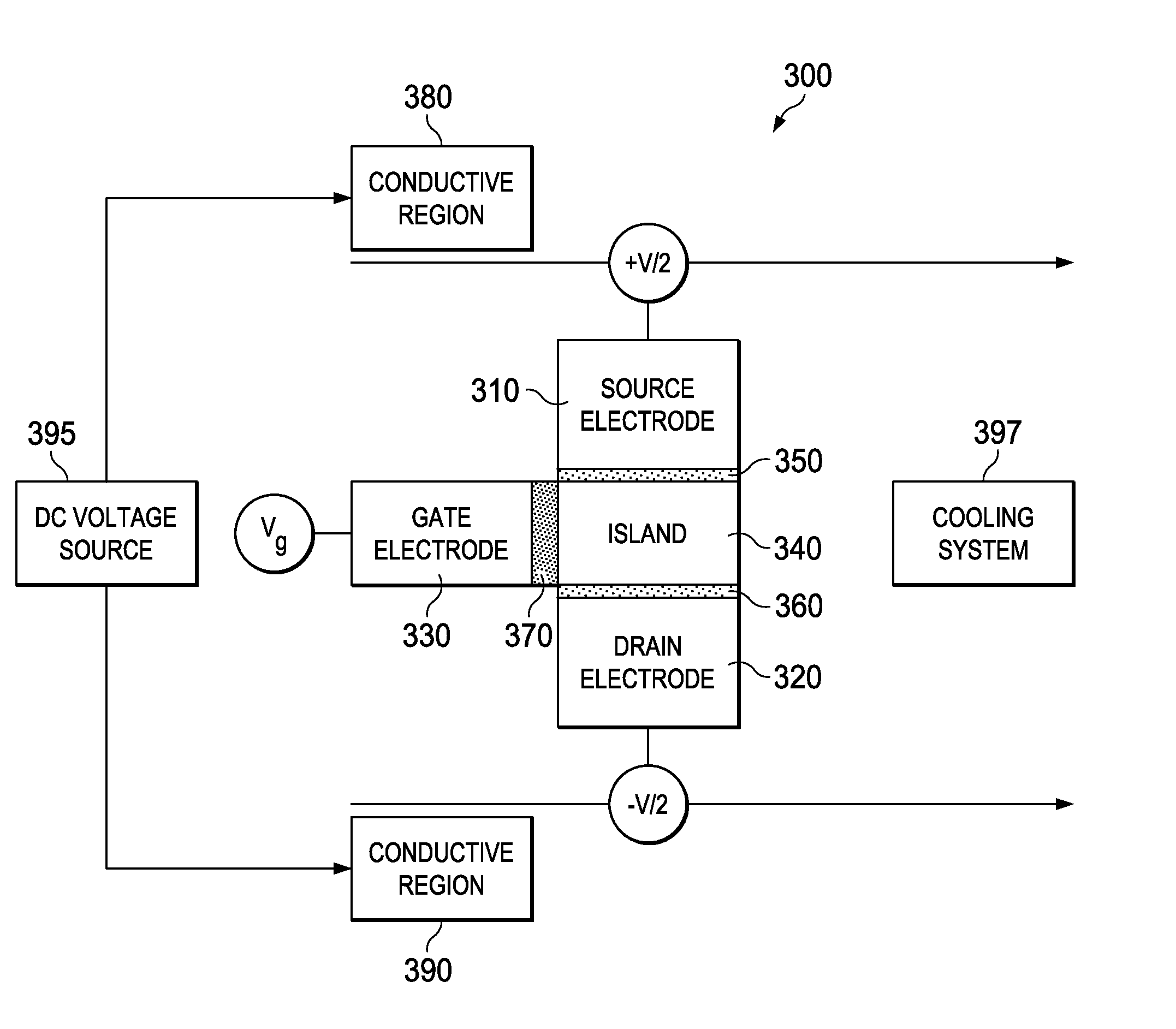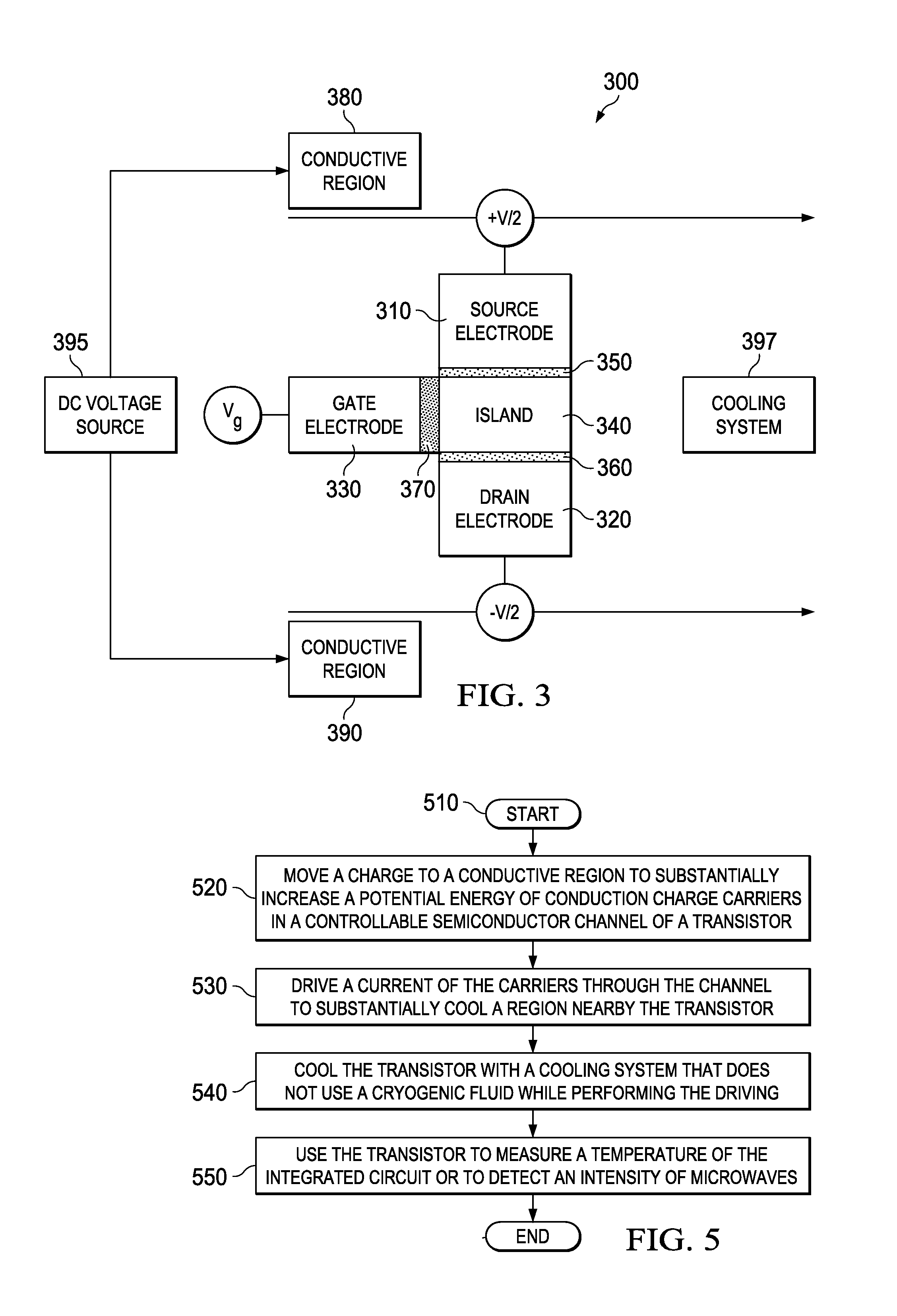Electronic device having thermally managed electron path and method of thermal management of very cold electrons
a technology of electron path and electron thermal management, which is applied in the field of thermal management, can solve the problems of electron decoupling significantly, inability to remove heat thereafter generated, and complex thermal management at such very low temperatures, and achieve the effect of increasing the potential energy density of conduction charge carrier
- Summary
- Abstract
- Description
- Claims
- Application Information
AI Technical Summary
Benefits of technology
Problems solved by technology
Method used
Image
Examples
Embodiment Construction
[0014]Disclosed herein are various embodiments of a novel technique for cooling an electronic device. Underlying the embodiments is the novel realization that an electronic device can be cooled by cooling the electrons provided to it by means of thermodynamic expansion. As a general rule, the temperatures of particles can usually be lowered by increasing the separation between the particles, in other words, decompressing them. An ideal particle follows the adiabatic law: (electrochemical potential−electrostatic potential) / T=constant. Thus by increasing the electrostatic potential, the density reduces, and the temperature drops. This holds true for electrons as well.
[0015]One way to decompress electrons is to cause them to flow up a potential hill. The electrons at the top of the potential hill are less dense; as the electrons go up the potential hill, they become cooler. While they will heat up again as they return down the potential hill, certain embodiments separate that return fr...
PUM
| Property | Measurement | Unit |
|---|---|---|
| conductive | aaaaa | aaaaa |
| voltage | aaaaa | aaaaa |
| electrical potential energy | aaaaa | aaaaa |
Abstract
Description
Claims
Application Information
 Login to View More
Login to View More - R&D
- Intellectual Property
- Life Sciences
- Materials
- Tech Scout
- Unparalleled Data Quality
- Higher Quality Content
- 60% Fewer Hallucinations
Browse by: Latest US Patents, China's latest patents, Technical Efficacy Thesaurus, Application Domain, Technology Topic, Popular Technical Reports.
© 2025 PatSnap. All rights reserved.Legal|Privacy policy|Modern Slavery Act Transparency Statement|Sitemap|About US| Contact US: help@patsnap.com



